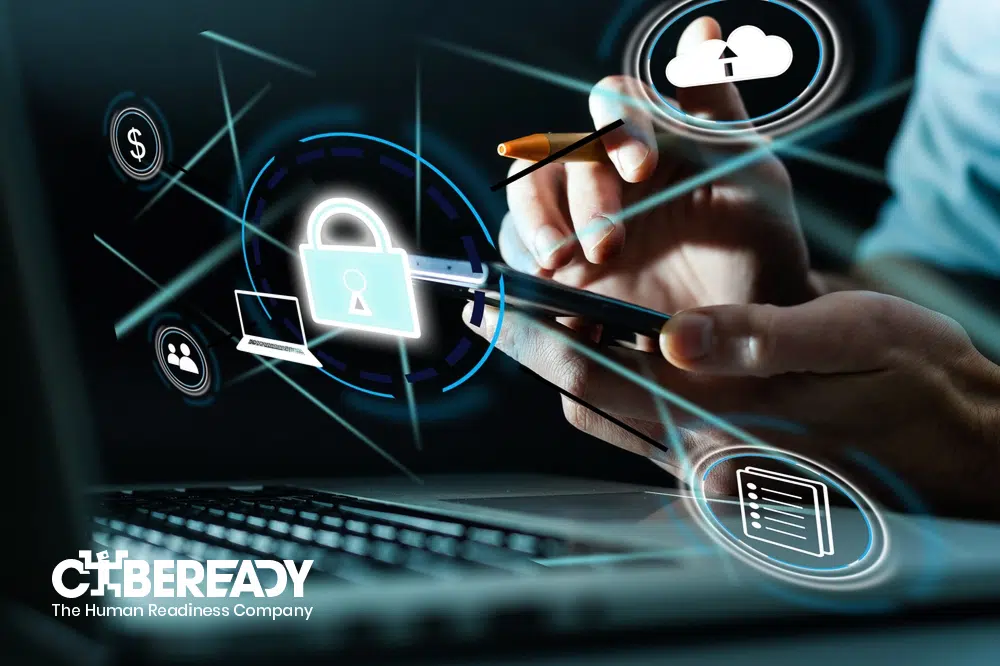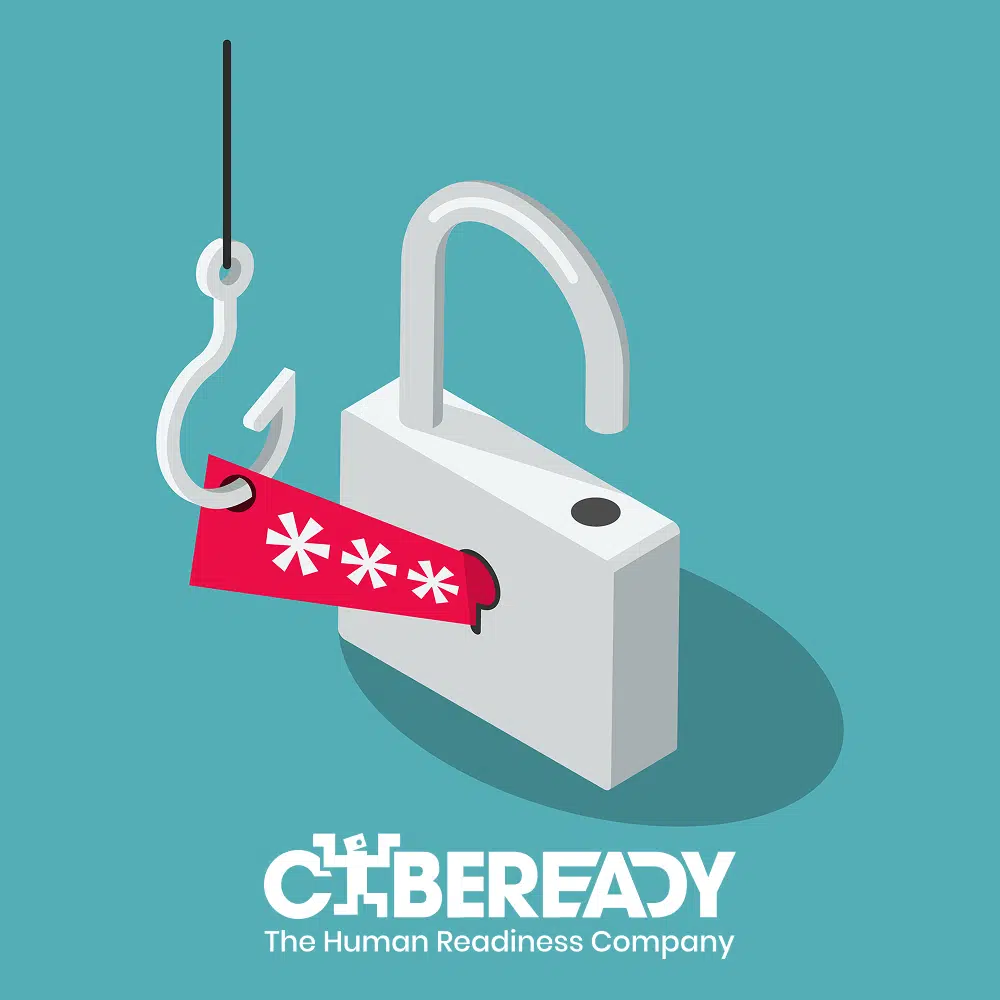How to deploy and manage an effective, easy, and frictionless awareness training program for bank employees
Your bank employees are on most cyber hackers’ radar. In fact, at least one of your employees is probably receiving a new phishing email while you’re reading these lines.
While most industries worldwide are affected by the imminent peril of cybersecurity threats, the banking industry is one of the prime targets. After all, the sector deals with what the attackers want the most, ‘money and personal information’.
Cyberattacks on financial firms have become a flourishing money-making business for cybercriminals. As per the report from a cybersecurity firm’s research, ransomware attacks on financial services have increased from 55% in 2022 to 64% in 2023, which is nearly double the 34% reported in 2021. Only 1 in 10 attacks were stopped before encryption took place, making a total of 81% of organizations a victim of data encryption.
So what can you do to make sure your employees are well prepared for that moment when they are hit by a cyber attack?
- Continuous cycle: Banks are highly regulated and scrutinized. There are many regulations (state, national, global) they need to adhere to. list regulations here. Regulators worldwide implement policies that should drive companies towards a more continuous approach in their training. No longer is yearly training adequate. Multiple learning opportunities are most likely to be proven more effective than once-a-year/quarter sessions. With real-time monitoring of employee engagement as well as the quality of their responses, it would be easy for IT to ensure or check engagement to verify compliance, or to be in the range of compliance. A continuous cycle ensures that all new staff will be properly onboarded, and reinforces the fact that security is a matter of importance 24/7—not just ticking a compliance box to satisfy minimal requirements.
- Short training content: Bank employees are busy and often inundated with high-priority tasks that involve customers’ financial well-being. Shorter training sessions are more accessible for employees to consume, so their engagement is guaranteed to be higher.
- Built-in expertise: No InfoSec manager has the full capacity to bring in-house knowledge and expertise in human behavior, learning, and automation. An adequate solution should have the knowledge built into the technology so no additional resources are needed to achieve an effective training program with real KPIs and measurable results.
- Easy operation (no complexity): Banks use complex legacy infrastructure that is hard to replace:
Implementing new technologies is usually painful for Banks. Banks are one of the more veteran industries using technology. This leads to a lot of legacy/old infrastructures where change is prohibitive. Banks have been around forever (Bank of the United States – 1791) so lots of technology is in place already. Both from a technical point of view and also people’s habits. You can change tools but you also need to consider the changes/impact on the employees. Additionally, banks serve crucial services and functions (money and financial security) so changes that interrupt anything relating to this simply cannot happen. If a security awareness solution is required to be implemented, complexity must be avoided. SAT solution is needed to be implemented, there is complexity. Even something like whitelisting has its challenges. - Total workforce training: Research shows that ad hoc, scattershot attempts at training staff subgroups are largely ineffective. To bolster internal defenses against sophisticated phishing threats, you must train 100% of your employee population every single month. This becomes more complicated as teams grow and are spread across various locations. Yet opting for anything less than total workforce training leads to piecemeal results, leaving security ‘holes’ in the form of gullible employees. The worst part: incomplete workforce coverage means not knowing some employees’ current awareness of threats, potentially missing the weakest links that put the organization at the greatest risk. By the time hackers exploit them, you’ll be running internal and external emergency triage with company leadership, HR, and PR staff.
- Timely training intervals: While the element of surprise matters, conducting totally random or sporadic security training is counterproductive. The most secure companies ensure that phishing campaigns occur in timed intervals. These may overlap with one another but can be set as once or twice monthly, bimonthly, or more. A set schedule enables CISOs and their teams to establish a solid general baseline for overall employee performance. The understanding gained from quantitative data regarding staff members’ ‘starting point,’ or typical threat response, allows you to identify your biggest problem areas and determine how to mitigate them. Note: Individual employee performance comes into play only after you’ve established intervals and a baseline.
- In-depth BI reports: All roads lead to your training data. But reports shouldn’t just indicate your company’s current security health or pinpoint weaknesses; they should measure and display real-time KPIs and business intelligence that drill down to country, department, team, or other levels—all without breaching individual employees’ privacy. Reports should contain clear, concise graphs and summary information that convey substantive changes. Ensuring that your key stakeholders receive weekly reports, campaign summaries, and Quarterly Board Reviews with actionable data will keep them apprised of ongoing progress and offer visibility into your training program’s long-term impact. You’ll also eliminate unnecessary administrative work to demonstrate the efficacy of your efforts; instead, your team can attend to more urgent security matters.
- Data science-driven training: Bank Security professionals know that employees respond differently to a variety of attack vectors. For those known as ‘serial clickers,’ a knee-jerk reaction to download, click, or open an attachment can often land them (and their organizations) in danger. Identifying and maintaining an updated list of serial clickers requires consistent monitoring of all employees’ performance. But they aren’t the only group you should examine; new hires, executive leadership, and veteran employees respond differently to potential threats, so you may want to analyze data to better understand how these groups behave. Next, your team needs to be able to build specially designed campaigns that shift these different or potentially problematic groups toward a more discerning approach to email management. The ‘treatment plan’ you create should include an adjusted frequency, timely reminders, custom simulations, and training content that helps to reform particularly susceptible groups. Doing all this is crucial, yet it has to be done with the utmost respect for employees’ privacy.
- Adaptive content: Once you’ve placed employees into segmented groups, it’s time for training to become adaptive. The scenario difficulty level is, of course, just one parameter. Determining future attack campaigns based on individual behavior is critical, as is adapting content to specifically address the challenges of a given scenario. These could involve password or data requests, messages from seemingly legitimate senders or sources, or realistic content tailored to an employee’s department or role. Material that adapts to both individual employees’ responses, as well as certain attack vectors, serves to further fine-tune employees’ defenses, turning the human element into an edge for your company.
- Globalized context: If you’re part of a global company with English as its corporate language, you should consider using multilingual content that includes your employees’ native tongues, as this will dramatically enhance their learning retention. Especially for multinational business environments, it’s important to adapt security training material to the cultures in which your employees live. Depending upon your company location, there are various legal implications regarding email compliance standards. And by citing local references in training simulations like national holidays, prominent news outlets, popular social media platforms, and seasonal sales, you’ll increase the odds that your email simulations will be believable while strengthening employees’ awareness of stealthy and highly realistic attacks.
- Just-in-time learning: There’s a limited window of time in which lessons derived from training will have the strongest long-term impact on employees. This is the ‘golden moment’—the instance in which providing timely, engaging, and effective content can make a lasting impression, versus having to enforce follow-up training sessions that are often perceived as random, irrelevant, and less memorable—let alone harder to enforce. Associating risks with specific employee behaviors is key. Staff who experience just-in-time learning are more likely to retain critical knowledge and awareness of risk factors, and better able to respond accordingly in future attack scenarios. In essence, companies must ensure that any employees who fall for a simulation immediately engage in a training session that covers the mistakes they’ve made.
Planning, managing, and analyzing a security campaign that incorporates the above best practices will provide companies with concrete results. Few organizations operating off-the-shelf solutions are able to achieve that. The challenge lies in doing so manually, as staff time is often at a premium, and the appropriate expertise across all of these categories is typically lacking in most corporate security teams.
Whether due to internal resource or tech limitations, the outcome is the same: inadequately trained employees who become frustrated with the elementary scenarios they routinely encounter. Expecting project managers or other team members with no training in the cognitive sciences to make decisions and take actions that properly execute such campaigns is unrealistic, and it’s fraught with complications—especially in the context of large, multinational enterprises.
A platform powered by machine learning like CybeReady can achieve these effectively. The solution offers security teams an array of data-driven suggestions and BI reports using industry best practices. This comes at a fraction of the cost of in-house simulation creation and analysis, as attempting to offer such content manually requires a significant time investment.
Employee satisfaction with security training also increases as simulations and their resulting training content are considered to be relevant and worthwhile instead of haphazard, out of context, or poorly designed. And by introducing more challenging attacks based on employees’ previous performance, you’ll prevent complex hacker attempts from tricking your staff—further reinforcing your security program’s enduring relevance. Most importantly, the right platform can support companies in transforming employees’ behavior toward potential email attacks for the long term, which represents a significant competitive advantage in any industry that relies heavily on digital communication.




